Pakistan's water woes: Assessing the national water policy
Pakistan’s population surging to 207.8 million has taken a toll on the per capita surface water available
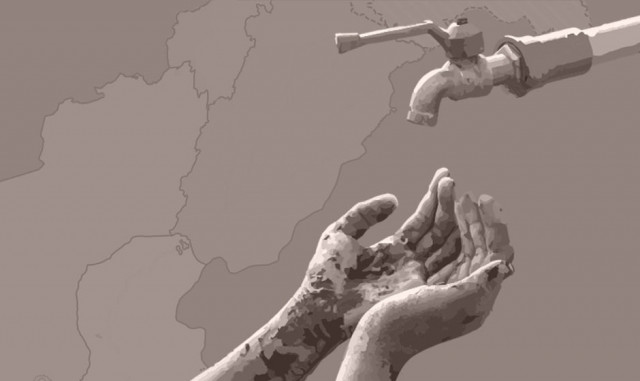
Experts state that malnutrition increases the risk of infection and infectious diseases, and in communities or areas that lack access to safe drinking water, these additional health risks present a critical problem.
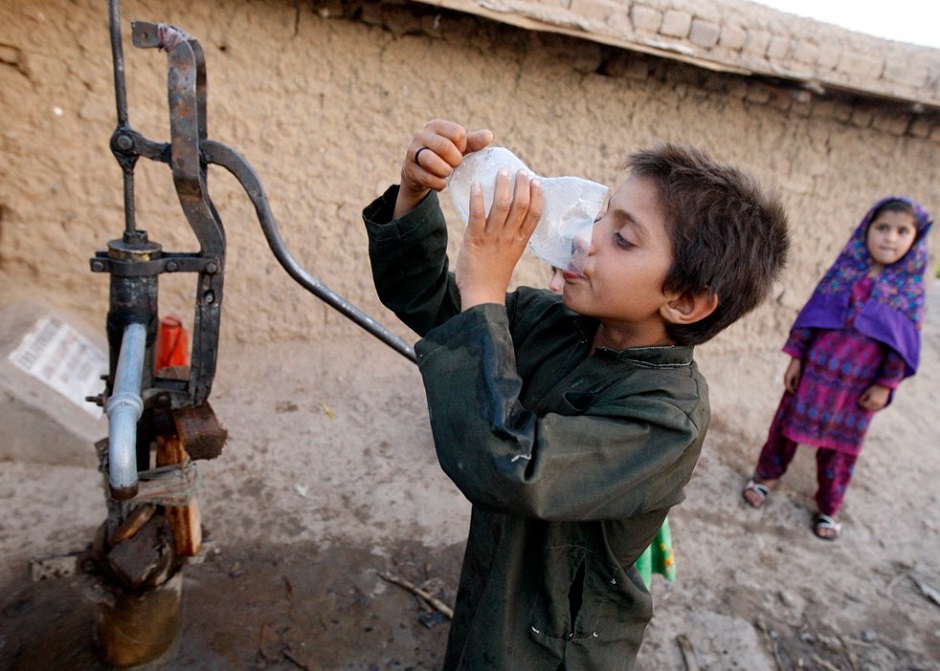 According to the health department, every year 1,500 children die in the Tharparkar district. Photo: REUTERS
According to the health department, every year 1,500 children die in the Tharparkar district. Photo: REUTERSMithi does not have access to clean drinking water and relies on wells, and in many areas the groundwater is saline. Water pipelines laid from Naukot to Mithi, which do meet some of the water requirements, are broken at several places, informs Dr Pervaiz Amir, a senior water expert associated with the Pakistan Water Partnership. “The pipelines are broken, even though they had been repaired at numerous occasions,” he adds.
The capital of Thar, however, does receive some of the highest flooding in the district with water standing at 15-20 feet. “But it’s difficult to capture it through rainwater harvesting,” says Dr Amir. “The majority of Reverse Osmosis (RO) plants that were recently installed around Mithi are either out of order or abandoned.”
A case for Gwadar
Around 950kms away from Mithi lies Gwadar, the first deep sea port of Pakistan. Though Gwadar is a key component of the $46 billion China-Pakistan Economic Corridor (CPEC) project, the fishermen community that makes up for a major population of the port city has a laundry list of water woes to speak on.
Thirty-five-year-old Abdul Sattar is among these fishermen. He informs that due to a prolonged dry spell of 5-6 years in Gwadar, the Ankara and Sawad dams have completely dried up.
“The government is supplying water to households through tankers [but this] is not enough, as each household receives only 30-40 gallons of water once a week,” says Sattar. “This water comes through tankers from Turbat’s Mirani dam, which is over 150kms away from Gwadar.”
What is worse, Sattar says, is that these are the same tankers which are used to supply diesel. “Hence, they give way to water-borne diseases, including kidney stones, diarrhea and hepatitis.” This polluted water, which costs Rs20,000 per tanker to the provincial government, is being supplied to the entire Gwadar district for over a year.
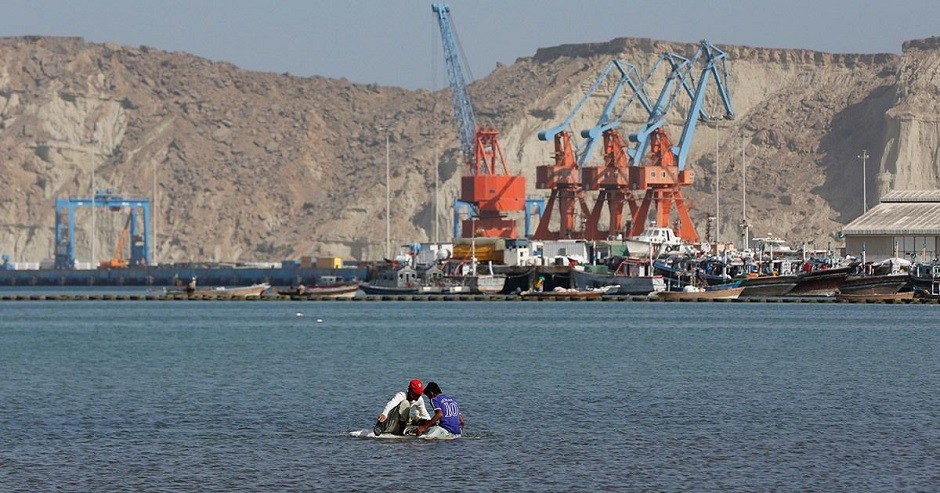 Polluted water, which costs Rs20,000 per tanker to the provincial government, is being supplied to the entire Gwadar district for over a year. Photo: REUTERS
Polluted water, which costs Rs20,000 per tanker to the provincial government, is being supplied to the entire Gwadar district for over a year. Photo: REUTERSHowever, a new desalination plant at the free zone area of the port has begun to supply almost 250,000 gallons of water at the cost of 0.80 paisa per litre to the residents of Gwadar on a daily basis. This was made possible after an agreement was reached between the Balochistan government and Chinese authorities to provide desalinated water. The port’s desalination plant was working far below its optimum capacity for almost eight months - at a time when the drought was at an all-time high. Had the agreement been signed earlier, it would have reduced the reliance on water coming from the Mirani dam. Officials of the Gwadar Development Authority have also informed that more desalination plants are being constructed in Gwadar as part of the CPEC project, owing to an increase in water requirements. The current requirement is of 0.8 million gallons per day.
However, it is pertinent to note that Gwadar's water woes have received much attention only because it is the centerpiece of the CPEC.
Water woes of cities like Mithi that suffer from acute water shortages are not addressed because they are not a development priority for policymakers.
National Water Policy and its shortcomings
Pakistan’s growing population - 207.8 million - has taken a toll on the per capita surface water availability in the country. The water availability per person has declined from 5,260m3 in 1951 to around 1,000m3 in 2016, and is highly likely to further drop down to about 860m3 by 2025, listing Pakistan from a ‘water stressed’ to a ‘water scarce’ country.
To address the water issues of the country, the National Water Policy was approved on April 24, 2018. It took years in the making. The water experts regard it as a welcome move but they have pointed out some shortcomings that need to be addressed.
Dr Tariq Banuri, the chairman of the Higher Education Commission and the founding executive director of the Sustainable Development Policy Institute (SDPI), is one of them. According to him, the policy identifies major water challenges of the country in a random manner. “For instance, there is a chapter on priorities, but it does not appear to be based on any scientific reasoning,” he says.

“Ideally, the government should have asked for an expert analysis of how and in what manner do different water uses affect welfare,” says Banuri. “Such as, life expectancy, food security, health, etc, instead, the policy creates a random and unjustifiable hierarchy of needs,” he adds.
Dr Banuri further mentions that there is also an absence of a sustained scientific basis for the policy, the neglect of environmental and water quality issues, the lack of clear quantitative or qualitative targets to be achieved through the implementation of this policy and the absence of a clear reference to the SDG agenda, especially the water-related targets to which Pakistan has agreed for 2030.
On top of that, the water ministry, which shepherded the policy, has not fully owned up the national commitment of the SDG targets, informs Dr Banuri.
Transboundary water woes
The National Water Policy promises a mechanism for sharing transboundary aquifers and a joint watershed management. It also proposes to look into regional mechanisms for addressing Pakistan’s growing vulnerabilities to water-related disasters, owing to transboundary water releases and stoppages.
However, according to Shafqat Kakakhel, the chairperson of the SDPI’s board and former assistant secretary general of the UN, the authors of the NWP seem to be unaware of the absence of a regional mechanism in South Asia to resolve issues pertaining to transboundary rivers in the region.
“India is unlikely to allow any such mechanism to be agreed upon any time soon,” says Kakakhel. “Pakistan’s sense of vulnerability is based on the worst case scenarios of India’s behaviour rather than a credible evaluation of India’s capacity to manipulate the flows of rivers, especially the western rivers, at will,” he adds.
The NWP’s references to transboundary rivers echo the lingering fears in Pakistan’s security community. It states that the capacity accruing to India from the dozens of hydropower projects built or planned by India on Jhelum and Chenab rivers enable it to manipulate their flows in a manner that could harm Pakistan’s agriculture and energy sectors and economic development.

The NWP promises to carry out a study to evaluate the impact of developments by India in the upper catchment of the western rivers on the environment, agriculture and hydropower projects in the lower catchment, of Pakistan, within the framework of the Indus Waters Treaty and international water laws. “This is a reference to Indian hydropower projects and their likely adverse impacts on Pakistan,” says Kakakhel. “However, it is not clear whether the study is proposed to be carried out in collaboration with India or unilaterally using satellite imagery. The IWT does not provide for such studies,” he adds.
On the other hand, the 1997 UN Watercourse Convention does proclaim the principle of ‘no significant harm’ caused by activities by any riparian state. However, neither India nor Pakistan has ratified the UN Watercourse Convention.
The NWP states that options shall be explored to preserve the environmental integrity of the Indus River System to reduce hazards faced by the population of areas of eastern rivers on the Pakistan side, keeping in view the rights of lower riparian. In this regard, it may be mentioned that since the signing of the IWT, which allocated the eastern rivers to Pakistan, India has diverted all the flows of these rivers for irrigation and other uses in Punjab, Haryana and Rajasthan, increasing the withdrawals from 8.3MAF at the time of partition to around 30MAF.
Consequently, the Ravi and Sutlej rivers and their canals in Pakistan have dried up completely. Pakistan's environment and water experts have also pointed out the adverse ecological consequences of the diversion of flows of the rivers and called for minimum environmental flows in order to protect the ecosystems in the areas.
However, what often gets ignored is that the Kabul River adds 21MAF to the Indus River, contributing over 16% to the Indus River System. “But there is no agreement between Afghanistan and Pakistan to regularise the sharing of the Kabul River,” says Kakakhel.
“Pakistan should express a resolve to enter into a dialogue with Afghanistan on the joint, cooperative development and management of the waters of the Kabul river basin,” he adds.
Lacking research
Given the challenges linked to the political economy of water, having the NWP is an achievement in itself. “But much work remains to be done,” says Aisha Khan, the executive director of the Civil Society Coalition for Climate Change.
“As water is a provincial subject, developing a comprehensive framework at the sub-national level will be critical to its success,” she says. “The statement of intent addresses major areas of concern, including climate change but will require capacity, resources and political will to achieve its objectives,” she adds.
On the other hand, the NWP is also not gender inclusive, informs Khan. “The policy also did not take into account the past work carried in this regard, or conduct an in-depth analysis of factors responsible for institutional ability or inability in ensuring compliance with departmental responsibility and mandate.”
A water emergency
The NWP is like a Hamlet without a prince, as it neither spells the key priorities in a detailed manner nor any instrument to achieve any of the 33 objectives.
Experts argue that the policy pays lip service to Integrated Water Resource Management, as they fear that if the government kept the water issue under the rug, drinking water would soon become a rights-based issue in Pakistan.
On the other hand, experts fear that the institutions responsible for equitable distribution of water resources are hijacked by power hungry politically influenced people, who are encroaching upon the water rights of poor farmers.
Robust measures are hence, needed to promote water stewardship, especially in the agriculture sector. If this sector is able to reduce its water share by up to 20%, it can possibly put an end to the prevailing water crisis in Pakistan.
The policy should also be revised and inculcate statistical information. It should fund streams, Agenda 2030 and end intra and inter-provincial conflicts for water, which tend to be more severe than transboundary water conflicts.
As for Mithi’s water woes, Dr Amir suggests building a flood canal out of the Indus River – similar to the cross border Rajasthan canal – which can help in productively utilising floodwater for various purposes.
“Recharge wells should be installed to capture rainwater that can eventually improve the water quality of wells,” he says, adding that the bund area with access to irrigation water should be shared through a pipeline during emergencies.
Moreover, Tharparkar should develop a water vision. “The districts haphazard development and infrastructure expansion should first address water issues and desalinisation in Nagarparkar,” says Dr Amir.
If business as usual continues by 2050, Sindh will become the most vulnerable hotspot in Pakistan, according to the World Bank's report titled ‘South Asia’s Hotspots: How Climate Change Will Affect Living Standards'. Punjab is identified as the second most vulnerable hotspot.

“The gaps [in the NWP] can be addressed through an adaptive management framework during implementation,” says Patchamuthu Illangovan, the country director of Pakistan for the World Bank. “The policy has many strengths, including its comprehensive nature and sharing of responsibilities among key stakeholders,” he adds.
The writer is an international award-winning environmental writer with an interest in climate change, deforestation, food security and sustainable development. He tweets @SyedMAbubakar and can be contacted at s.m.abubakar@hotmail.com


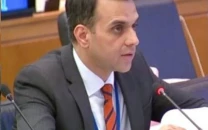









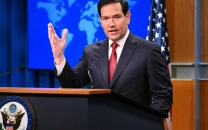






COMMENTS
Comments are moderated and generally will be posted if they are on-topic and not abusive.
For more information, please see our Comments FAQ